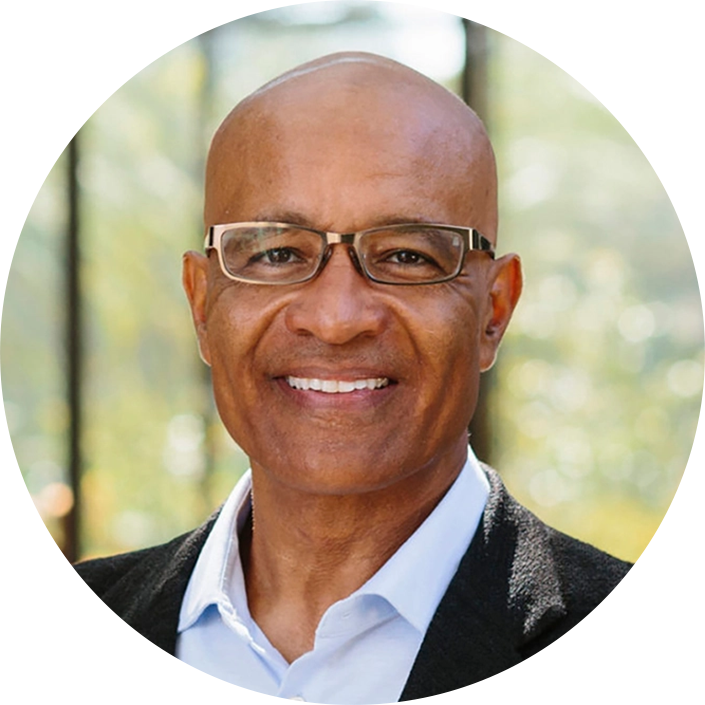Stanford scholars share their thoughts on what ending affirmative action means, and what universities can do next to tackle some of the problems affirmative action sought to remedy.
Remarks have been edited for length and clarity.
Anthony Lising Antonio, Associate Professor, Graduate School of Education
The judgment is a setback for efforts to make our racially-stratified education system more accessible and equitable. Their opinion, while not surprising, rests on the rejection of diversity as an educational benefit and colleges’ procedures to obtain it.
As a social scientist, I am troubled by the disregard, if not rejection, of the now-decades of science that illustrates how racial diversity provides educational benefits to individuals and society. These include complex thinking and critical capacities such as leadership, perspective-taking, and cultural competency.
Moreover, racial minority graduates from selective schools like Stanford significantly contribute to the number of professionals – physicians and lawyers in particular – serving communities of color. Ignoring the scientific community undermines the confidence society has in our entire education system writ large, which is a dangerous precedent.
Perhaps what is most interesting about the decision is that it still allows universities to consider an applicant’s presentation of race such as it is tied to a “quality of character or unique ability that the particular applicant can contribute to the university.” Interestingly, this closely describes the current practice of holistic review rejected by the court. Absent a check box, admission essays will be the next part of applications to be appraised and scrutinized – by applicants, admissions officers, and inevitably, the courts. We all might conclude that race continues to be a significant determinant of people’s opportunities, experiences, and ability to fully participate in society.
Ralph Richard Banks, the Jackson Eli Reynolds Professor of Law, Stanford Law School
From what I read, there was nothing new in the majority argument. There have been contradictions, instabilities, and vulnerabilities in the doctrine and practice around affirmative action for a long time. The court has just shifted in how it evaluates those questions. It has applied a much more stringent form of scrutiny in this case than it has in the past.
So, the big takeaway is that the majority opinion was not a surprise. It was expected. The majority’s rationales for striking down affirmative action are in essence the same sort of rationales that have been discussed previously, but never accepted by a majority of the court. And now there’s a different majority, and a different decision. Some of the issues are the same issues that have been debated from the very beginning, but the assessment of those issues has shifted. One noteworthy change was the extent to which Roberts completely ignored the argument that Justice O’Connor and other justices have made in prior cases of the extent to which affirmative action may serve society and the stake that society has in affirmative action. Roberts discussed affirmative action and diversity wholly with respect to the internal operations of the university.
Banks’ answer originally appeared in an interview by Sharon Driscoll at Stanford Law School.
David Grusky, the Edward Ames Edmonds Professor of Economics, School of Humanities & Sciences, the Director of the Center on Poverty and Inequality, and a Senior Fellow, Stanford Institute for Economic Policy Research (SIEPR)
The Supreme Court’s “affirmative action” decision rests on the pretense that we live in a colorblind world in which all children have an equal opportunity to build a resume that will appeal to elite colleges. This decision is inconsistent with decades of scientific evidence showing that it’s easier to build an appealing resume when you’re born into money, when your parents can afford fancy neighborhoods and boarding schools, and when you don’t face unremitting discrimination, prejudice, and animus. Although it’s tragic that U.S. law is now premised on a lie, I’ll focus here on the very practical question of how to move forward given that’s the case.
The university’s duty: If there’s any silver lining to be had, it’s that the Supreme Court’s decision impels admissions officers to “level the playing field” by detecting evidence of illicit advantage and disadvantage. The sacred task, in other words, of the admissions officer must now be to determine an applicant’s underlying capacity to contribute to the university and society. The Supreme Court’s majority opinion implies that this assessment must be predicated entirely on the evidence in the application materials themselves rather than the presumption, for example, that all white people have led a barrier-free life. This is not as challenging as one might surmise. Because racial inequality is so deeply built into our society, the effects of that inequality will inevitably be revealed in each and every application, thus making it possible to engage in a holistic review that corrects for the effects of racism. The key point here: If the admissions committee properly identifies the role of illicit advantage and disadvantage, we’ll end up with diverse college classes “on the natural” without any invocation of quotas (thus rendering the process consistent with the majority opinion).
The country’s duty: It is, of course, abhorrent that we must resort to this bizarre counterfactual exercise in which admissions officers are asked to “correct” for illicit advantage and disadvantage. The clear way forward is to make it our country’s highest priority to actually eliminate the root problem – egregious inequalities of opportunity – that our children face. These inequalities can be corrected by eliminating racial gaps in the opportunities that parents can buy for their children (via, e.g., fancy neighborhoods and high-quality primary schooling) and by eliminating racial differentials in key services (e.g., healthcare) and experiences (e.g., differential policing). We’ve long asked our downstream institutions – such as colleges – to try to correct for the failings of our upstream institutions. If instead we authentically committed to building inclusive upstream institutions, we could better protect the country from a rogue Supreme Court.
Eujin Park, Assistant Professor, Graduate School of Education
Today’s Supreme Court decision represents a major blow to the ongoing fight for an educational system to equitably serve and provide equal opportunity for all students. It is crucial that universities, students, and parents understand, however, that this opinion does not prohibit universities from taking into account “an applicant’s discussion of how race affected his or her life, be it through discrimination, inspiration, or otherwise,” as Justice Roberts writes in the majority opinion. Students can still discuss their experiences with race throughout the admissions process and universities may still take these into consideration. Unfortunately, this puts the onus on students and their families – a trend we have seen in K-12 education with policies like school choice programs and test-based selective enrollment schools, in which access to particular opportunities depends on how well families navigate an unequal system, rather than putting in structural measures that account for the system’s implicit and explicit biases.
That said, as President Biden said in his remarks today, the court’s decision will not be the last word on universities’ abilities and rights to admit student bodies with a rich diversity of ideas, experiences, and perspectives. This will continue to be central to universities’ missions, as research has demonstrated consistently that racial, gender, and social class diversity in schools results in greater civic understanding, empathy, and respect for others, and, and advances in research and knowledge production.
We also have to understand the court’s decision within the broader context of challenges toward making an equitable educational system, including equal opportunity, desegregation, and inclusive curriculum. Across the country, conservative groups and funders are targeting proven methods to boost racial diversity, improve educational outcomes for students of color, and teach a more honest history of this country. Florida’s rejection of the AP Black History course earlier this year is just one example of this concerted conservative effort. This ban on affirmative action is the outcome of a longer sustained effort to challenge progress towards a more equitable opportunity structure along the entire educational pipeline, starting from early childhood education to post-secondary. Any individuals and organizations invested in a just and fair educational system must recognize this as we regroup and continue fighting for equal opportunity on multiple fronts.
Sean Reardon, Professor of Poverty and Inequality in Education, Graduate School of Education and a Senior Fellow, Stanford Institute for Economic Policy Research (SIEPR)
Given the court’s decision to ban affirmative action, what should we do now? We must redouble our efforts to dismantle the systemic inequalities in educational opportunity in children’s lives – from birth through high school. That means addressing family economic inequality, using housing policies to address residential segregation, using education policy to improve preschools and K-12 schools in minority communities, and making good on the promise of Brown v Board to eliminate racial school segregation and inequality.
Colleges can take this moment as an opportunity to reconsider admissions practices more broadly. They should consider income-based affirmative action to ensure selective schools are accessible to low-income students; consider eliminating legacy preferences in admissions, which privilege white and affluent students; and consider expanding the number of students they admit and teach to broaden and democratize their reach. None of these alone will lead to the same level of racial diversity that students have enjoyed as a result of race-based affirmative action, but they may help, and have fairness and equity benefits of their own.
Matthew Snipp, Burnet C. and Mildred Finley Wohlford Professor in the School of Humanities and Sciences and the Vice Provost for Faculty Development, Diversity and Engagement
The nation has struggled with the cause of racial justice in fits and starts since the day of its founding. The promise of the Emancipation Proclamation, and the 14th and 15th Amendments, was overshadowed by the long years of Jim Crow rule that indelibly marked people of color as second-class citizens with no hope of advancement. Like drinking fountains, bus seats, and hotels, to name only a few, the American Dream was boldly marked “For Whites Only.” It never received a name but until the mid-20th century, government programs and policies amounted to affirmative action for whites only.
The unsustainable injustice of racial inequality briefly withered in the years after World War II. President Truman, against deep opposition, ended racial segregation in the military. In 1954, the Supreme Court determined that “separate” was inherently unequal, and so began a long struggle to bring freedom and equality to all Americans. Presidents Truman, Eisenhower, Kennedy, Johnson, and Nixon all pledged their administrations to acting affirmatively to end racial discrimination. Frustrated with the lack of progress, the Nixon administration enacted mandates that led to the establishment of quotas identified as “Affirmative Action.”
Since the 1970s, the court has in bits and pieces diminished the scope and promise of the civil rights legislation enacted a decade earlier. It has gradually allowed a renewal of racial injustice and opportunities to disappear. Blacks now graduate from high school at about the same rate as their white counterparts, but for many reasons, they lag far behind as college graduates. Today’s court decision will only add to this gap. The justices committed to an originalist interpretation of the Constitution appear equally committed to the injustice originally embedded in the nation’s founding, and they have acted affirmatively to advance it.





